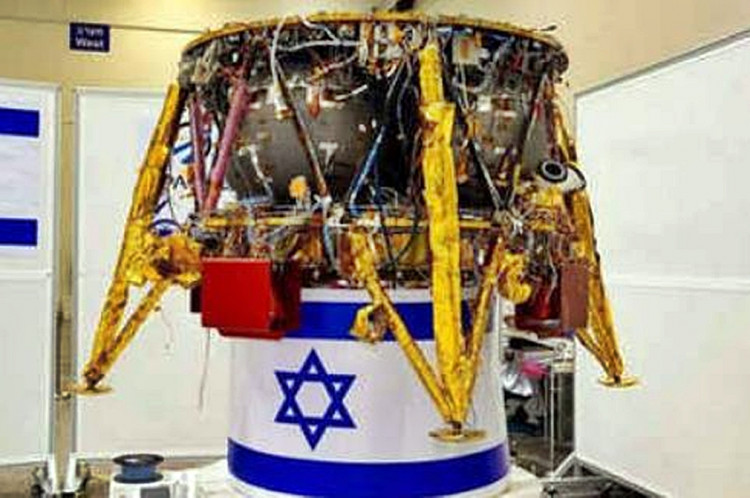Israel's "Beresheet" robotic lunar lander will touch down on the Moon Thursday (April 11) after a long trek that began Feb. 21.
Standing a mere 1.5 meters tall, the four-legged Beresheet will become the first Israeli spacecraft to land on the Moon. In so doing, Bereshet will make Israel only the fourth country on Earth to attain this feat after the United States, the Soviet Union, and China.
Another historical first: the Israeli company that developed and built Beresheet, Space IL, will have beaten SpaceX to the honor of being the first private firm to land its spacecraft on the Moon.
SpaceIL will broadcast live video of the landing. It expects Beresheet to land sometime between 3 and 4 p.m. EDT on Thursday, April 11.
Beresheet is only expected to last about two days on the lunar surface. It has no thermal control system and will eventually overheat and die.
Weighing just 585 kg, this washing machine-size spacecraft clawed its way to the Moon powered by a single British-made LEROS 2b liquid-propellant rocket engine. This versatile single engine allowed Beresheet to reach lunar orbit and will be used for deceleration and landing.
It took Beresheet almost two months to reach the Moon on this engine. In contrast, the more powerful Apollo spacecraft made the journey in only three days.
On Monday, Space IL mission controllers fired Beresheet's engine to achieve an elliptical orbit around the Moon. During this operation, Beresheet photographed the Moon's far side from about 550 kilometers away. It
SpaceIL is waiting for the precise moment to ignite Beresheet's thrusters one last time. The burn will slow down Beresheet, cause the four-legged robot to fall out of lunar orbit, and gently touch down on the Moon's surface.
"This joint mission of SpaceIL and Israel Aerospace Industries (IAI) will be broadcast live via satellite for a pool feed and live streamed with access to all media," said SpaceIL. SpaceIL said the group will host a press conference immediately after the landing.
Beresheet's science payload consists of a magnetometer developed by the Weizmann Institute of Science and a laser retroreflector array from the NASA Goddard Space Flight Center.
It also carries a digital "time capsule" containing over 30 million pages of data. This includes a full copy of the Torah; the English-language Wikipedia; children's drawings; a children's book inspired by the space launch; memoirs of a Holocaust survivor; Israel's national anthem (Hatikvah); the Israeli flag, and a copy of the Israeli Declaration of Independence.






